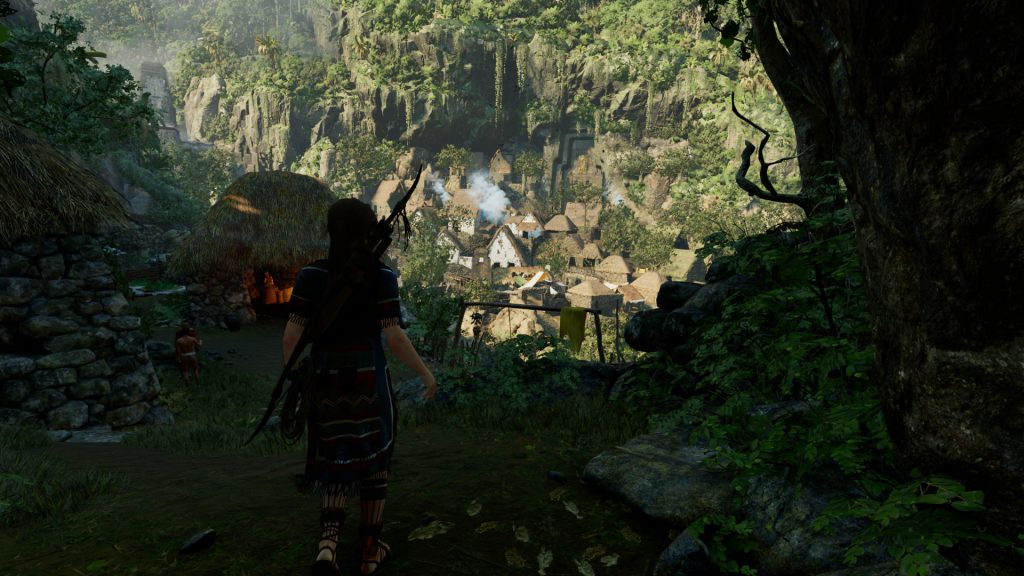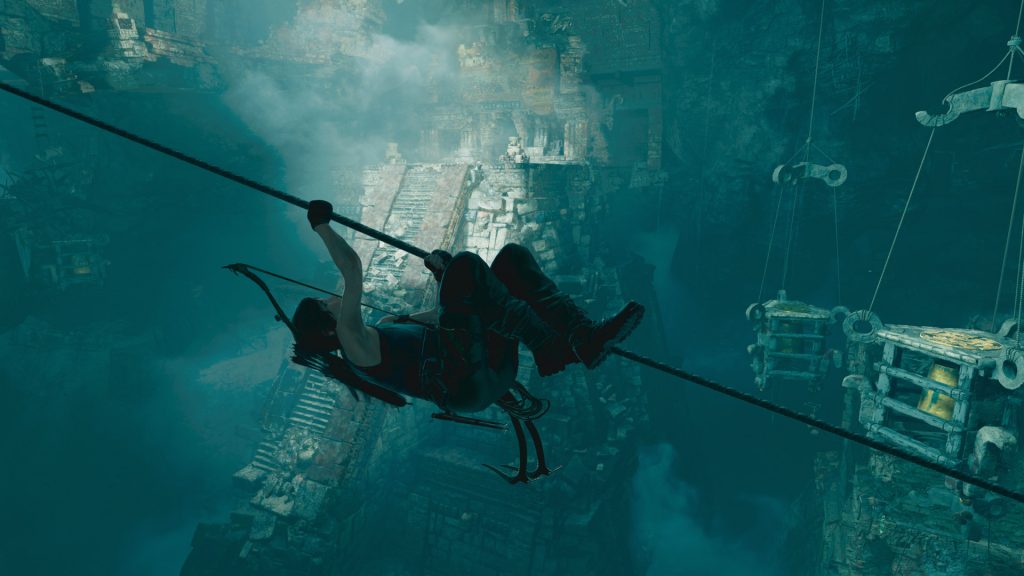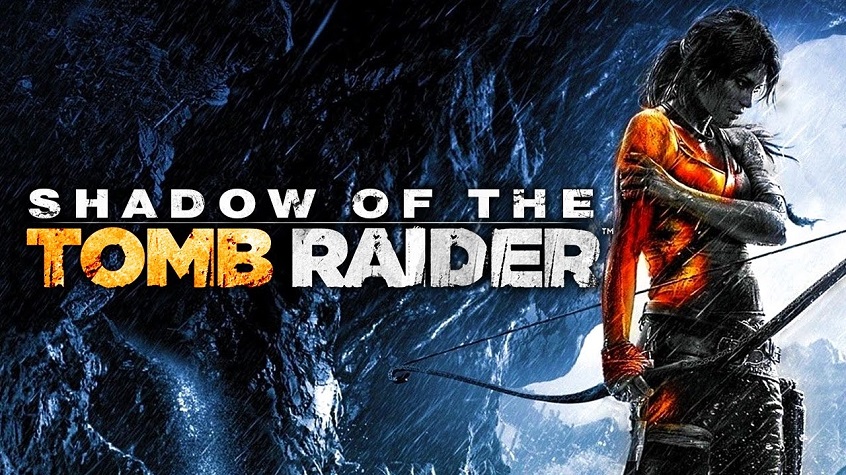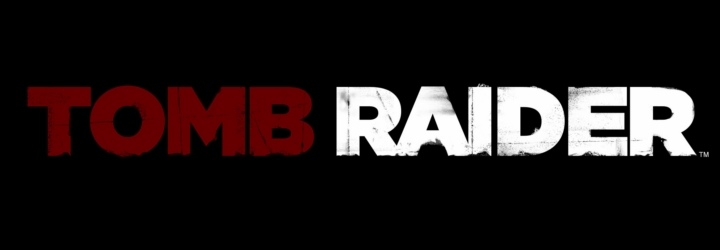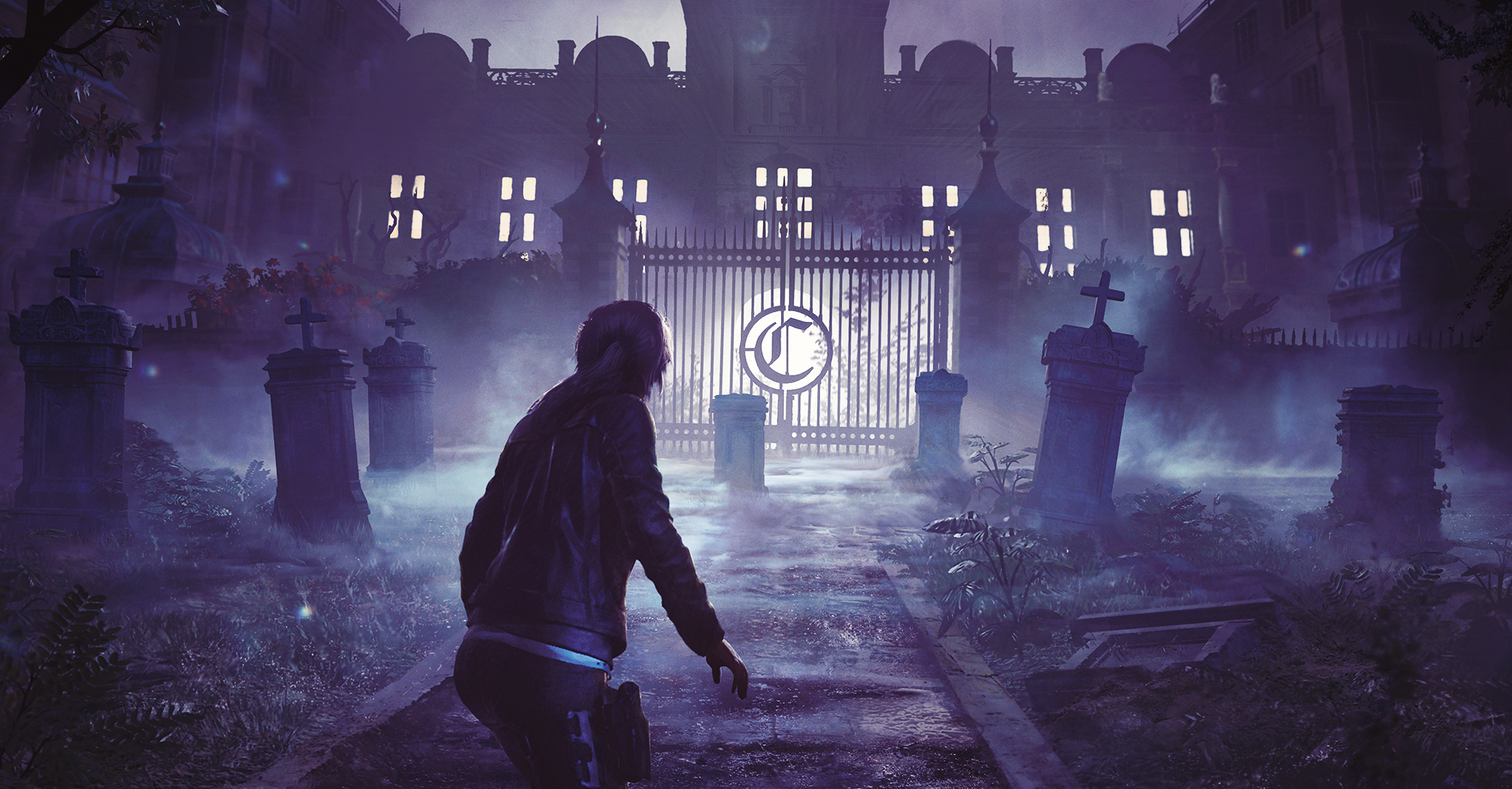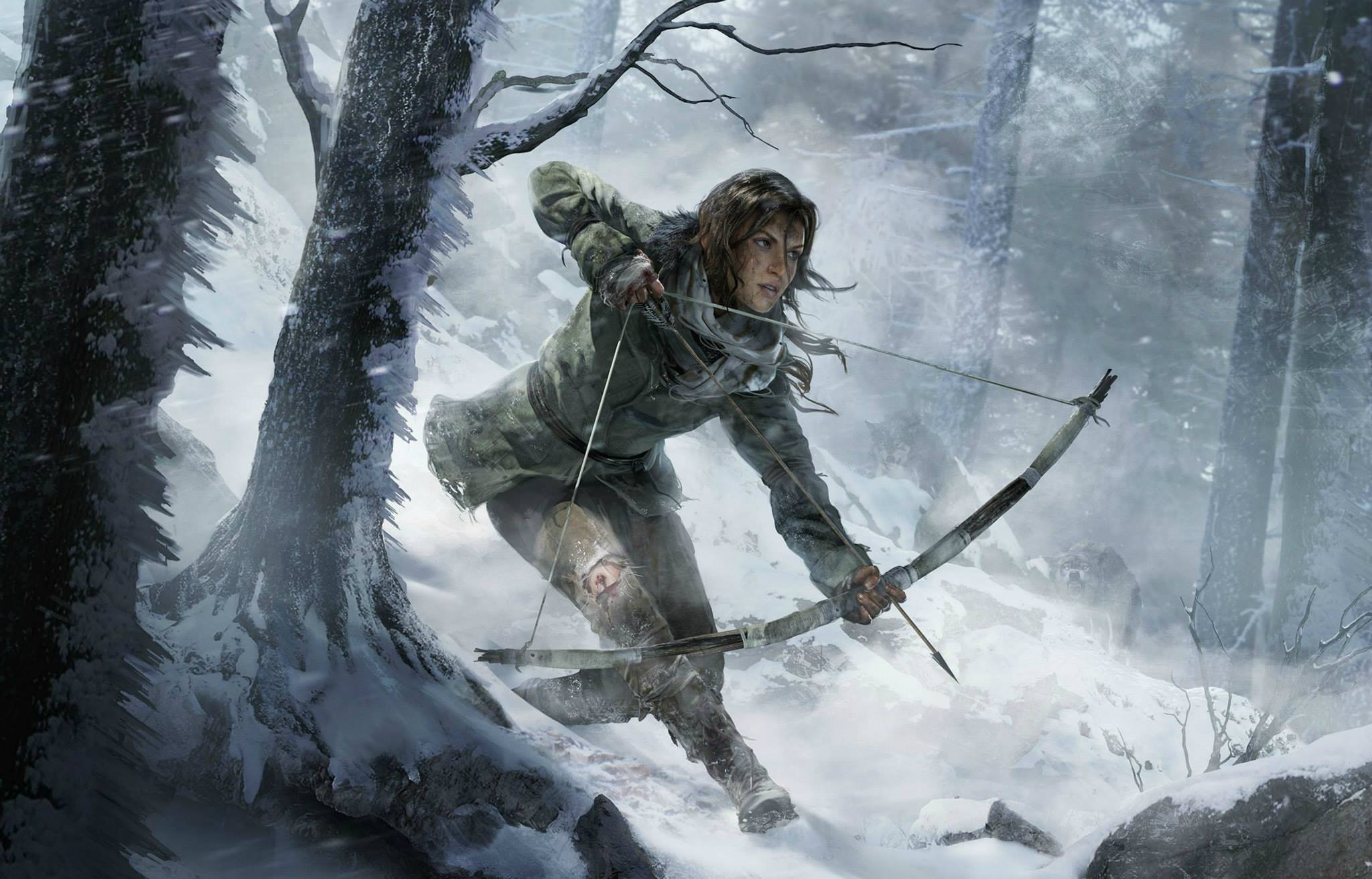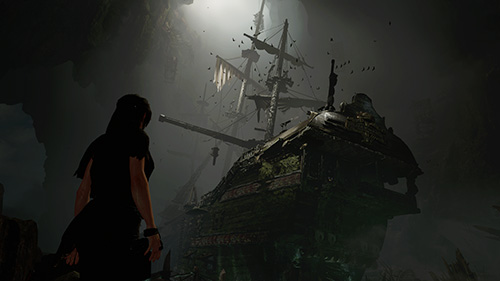
2013’s Tomb Raider breathed new life into one of the medium’s most enduring franchises, winding back the clock to explore the formative, traumatic events which would shape Lara Croft. In doing so, it opened up the series to really enjoyable semi-open world gameplay, crafting, terrifyingly intense and claustrophobic set-pieces, and allowed its protagonist to have an actual human arc, growing from an inexperienced, vulnerable young woman into a hardened survivor. It’s been five years since this new direction, and after 2015’s Rise of the Tomb Raider polished this formula to a tee, it’s sadly starting to wear thin in the latest release, Shadow of the Tomb Raider.
If you’ve played either of the past two games in the series, you’ll find very little has changed here. The bulk of Shadow of the Tomb Raider‘s gameplay is spent navigating the jungles of Peru, jumping and climbing using Lara’s climbing axe and rope to ascend along crumbling surfaces, making death-defying leaps and grappling to safety. Yet for all the excitement this should engender, it all feels a bit ‘been there done that’ at this point. As in the Uncharted series, there’s always a pre-determined easy-to-follow path for Lara to use in these sections that rarely split off, and a failure rarely results in a significant setback. New swimming sections also punctuate exploration, although laughably they also include stealth elements. Yes, Lara is meant to cautiously hide in seaweed, moving from cover to cover, to escape the gaze of eels or piranhas. It doesn’t really work when you can swim past these threats generally with no issue, and if an eel does catch you it’s a simple QTE event to escape. With a couple of basic skill point upgrades to improve Lara’s breathing, these sections also quickly lose the threat of drowning, although that’s not to say I didn’t physically hold my breath for the couple of well-directed scenes where Lara had to squeeze through an insanely narrow space to find air.
Lara still has an array of hub areas to explore, containing a huge amount of hidden collectables, loot caches, riddles and optional tombs. While you can still hunt the local wildlife for pelts and parts to upgrade your equipment, it never feels overly necessary, thanks to the money dropped by baddies you take down that can be spent in one of the new populated towns, with merchants who’ll happily sell you improved bows, guns or ingredients. Towns are also where you’ll find new side-quests, where you can gain some valuable equipment that can bypass previously gated-off areas.
To maximise your enjoyment from Shadow of the Tomb Raider, you’ll definitely need to have the itch to explore and collect everything and go over the game with a fine-tooth comb, because it’s clear that’s how it is intended to be played. It seems like every few minutes you’ll be finding an inscription you can’t read, until you’ve found enough tablets to upgrade your language proficiency and can return, or an artefact that’s part of a set of six, or a sealed entrance that’ll require back-tracking once you’ve completed the relevant side quest.
The highlight of the entire game are the Challenge Tombs, optional areas which have the most creative platforming challenges and puzzles in the game. From secret temples, to towering Spanish galleons, they also showcase the incredible detail and polish that has gone into the environments of Shadow of the Tomb Raider. Genuinely, every artist involved should now have a golden ticket in their portfolio from their work on this game, as the visual design is the key reason why exploration of these Tombs is as fun as it is.
While the move to Peru’s jungle makes for some visually spectacular adventuring, the narrative of Shadow of the Tomb Raider fails to reach the same heights. Through one of Lara’s tomb-raiding adventures, she steals an artefact to keep it out of the hands of the villainous Trinity organisation, like any other day of the week. This time, however, her actions have the rather unfortunate side-effect of setting off a sequence of apocalyptic events, from floods to earthquakes, which will end with the Sun dying out unless she can find the artefact’s counterpart before Trinity does.
By making Lara the instigator of the apocalyptic events in the game, Shadow of the Tomb Raider gives itself the perfect mechanism to deconstruct the arrogance of her kind-of imperialistic adventures, although it’s not pursued very far. Lara’s best friend Jonah (receiving some welcome development) gives her a stern talking to, and Lara feels bad about herself sometimes, but then the rest of the game plays outs entirely like a standard Tomb Raider adventure. Similarly, the head of Trinity is finally revealed as Dr. Dominguez, a man whose motivations are surprisingly small-scale for someone in charge of a global evil organisation. I can understand what they were going for here, and to some degree it makes him a little more relatable, although it’s not really explored to an interesting level. Ultimately, for all the unique directions that could have been taken, Shadow of the Tomb Raider feels remarkably rote.
Combat remains firmly centred around stealth action, as Lara moves between clumps of dense vegetation, covering herself in mud to avoid thermal vision and popping out to execute takedowns or land precision headshots with her bow. However, none of this feels quite as fluid as before, as enemy vision cones are difficult to discern and seem inconsistent, meaning you’ll be relying on Lara’s ‘survival instincts’ vision for much of your time. This Batman-esque mode indicates when enemies are out of the line-of-sight of others, making them easy to pick off. You’ll be spending a lot of time watching red-highlighted enemies, waiting for them to turn yellow so you can safely attack. However, there is some room for experimentation with a couple of trap arrowheads that can lure or poison enemies. In the few sections where stealth isn’t an option, the gunplay in Shadow of the Tomb Raider just isn’t up to par. The cover-based shooting feels loose and inaccurate, and most of the time you’ll just be aiming at flammable barrels and then cleaning up a few stragglers.
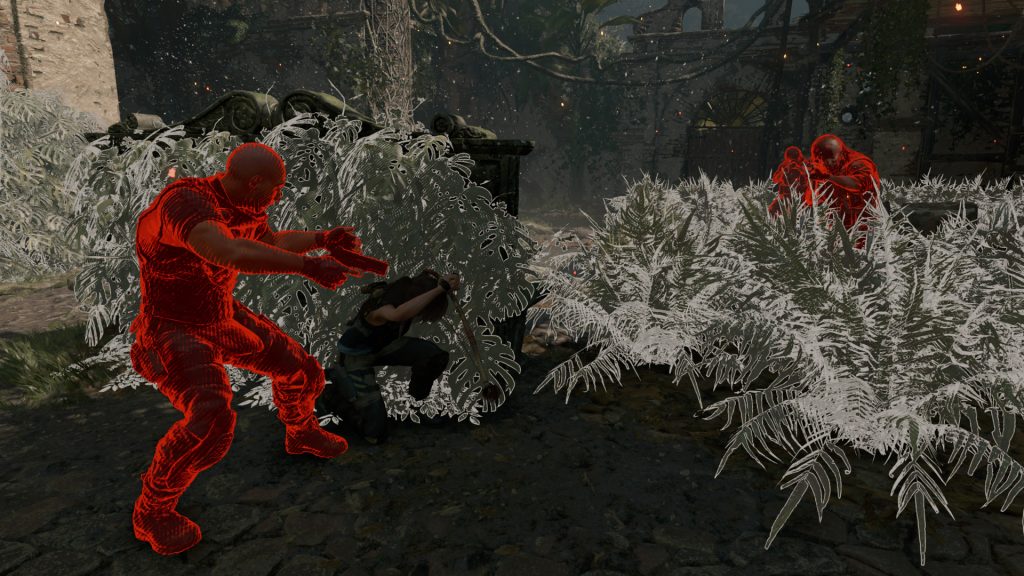
A lot of what worked in Tomb Raider and Rise of the Tomb Raider works here, and there is a lot of content to enjoy in Shadow of the Tomb Raider if your expectations are set correctly. While there are plenty of imaginative and highly detailed environments to explore, the formula which felt fresh five years ago remains relatively unchanged. Some may find that simply having more Tomb Raider is enough, but I think most of its audience want the series to have advanced and evolved, which hasn’t happened here. It’s disappointing, especially with a narrative that has plenty of good ideas, none of which are followed through with to a satisfactory level. However, as with the rest of the series there is still a commendable level of polish on Shadow of the Tomb Raider. One for the die-hard crypt-explorers among us, but everyone else may want to wait to see if the series’ next reboot brings any fresher ideas.
-Incredibly detailed and spectacular environments -Plenty to explore through tombs and side missions -Thrilling set-pieces
-Despite some good ideas, the narrative lacks the same drive to explore as its hero -Combat necessitates an over-reliance on 'Survival Instincts' -Not much has been done to improve on the formula, which is starting to wear in its third outing

